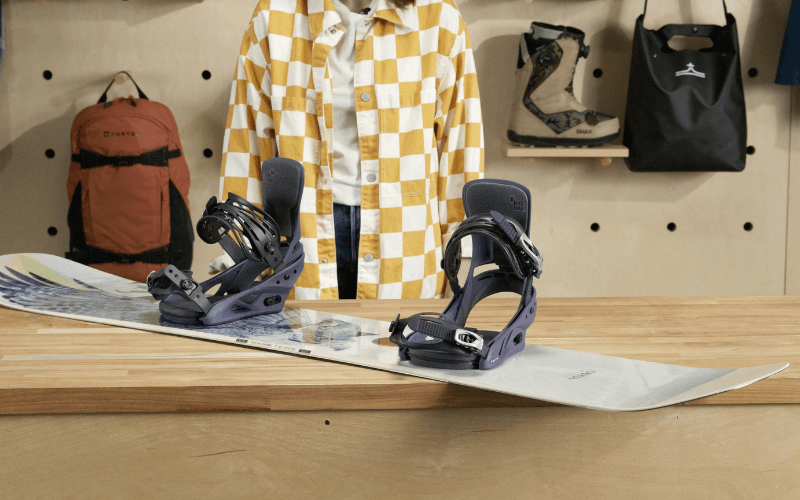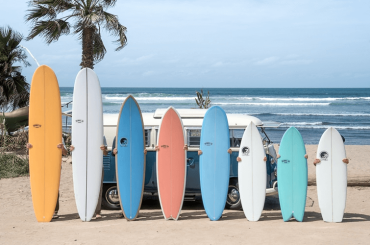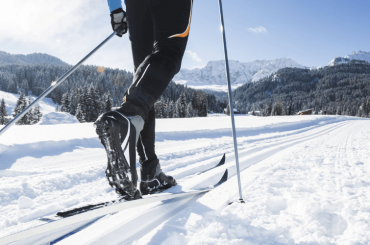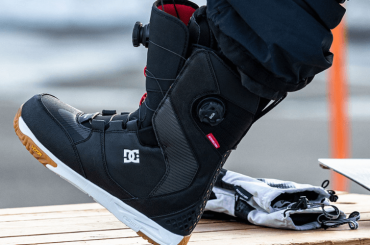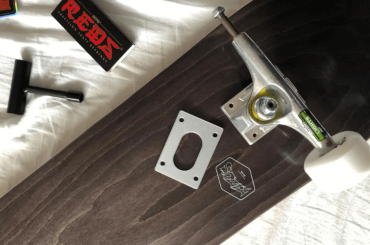Bindings are a necessary piece of equipment for snowboarding, but are they universal? Snowboard bindings are not one size fits all.
Different riders have different preferences for their bindings and what works well for one person might not work well for another. So the question is, are snowboard bindings universal?
In this blog post, we’ll take a look at some of the features that make binding personalization possible and discuss whether or not all riders should be using the same type of bindings.
Are Snowboard Bindings Universal?
Most snowboard bindings will fit most snowboards but there are always exceptions to the rule. If you have an older model of snowboard or a particularly odd-sized board, it’s always best to check with the binding manufacturer to see if they have any compatibility recommendations. In general, though, you shouldn’t have any trouble finding bindings that will work with your board.
When you’re shopping for bindings, you’ll also need to make sure that you get the right size. Bindings are usually sized about your shoe size, so just pick the size that corresponds to the shoes you’ll be wearing.
Bindings come in two main boot size categories:
- Standard-size: Standard-size bindings will fit most men’s snowboard boots with a size of 9 or less and most women’s snowboard boots with a size of 10 or less.
- Large -size: Large bindings are designed for men’s snowboard boots with sizes 9.5 and up and women’s snowboard boots sizes 10.5 and up. It’s also important to make sure the bindings you choose match the type of riding you’ll be doing.
For instance, if you’re mainly going to be hitting the slopes for some recreational carving, you’ll want different bindings than if you’re planning on hitting the half-pipe or doing some serious freestyle riding.
Snowboard bindings come in a wide range of prices, from around $100 to over $400.
As with most things, you generally get what you pay for when it comes to bindings. The more expensive bindings will usually be lighter and offer more support and durability than the cheaper models.
When choosing bindings, it’s important to find a balance between price, weight, support and durability. If you’re a beginner, you probably will need to err on the side of cheaper and more durable bindings. If you’re an experienced rider, you may be willing to sacrifice some durability for lighter weight and better support.
Finally, make sure to double-check the mounting pattern on your snowboard before buying bindings. Most boards will have either a 2 x 4 or 4 x 4 binding mount pattern, but there are a few other options out there as well. Again, if you’re unsure which binding mount pattern you need, just check with the manufacturer of your board.
What are snowboard bindings and what do they do?
Snowboard bindings are the devices that attach a snowboarder’s boots to the snowboard. Bindings transfer the energy and movement of the rider to the board, allowing precise control over turns and other maneuvers. Most bindings also have some form of padding or support, which helps to absorb shock and reduce fatigue while riding.
There are a variety of different snowboard binding designs on the market, each with its advantages and disadvantages. The most important thing is to choose bindings that fit both your boots and your riding style.
If you’re just starting, it’s a good idea to rent or borrow bindings from a friend before making a purchase. This will give you a chance to try out different types and find the ones that work best for you. When shopping for bindings, it’s important to keep in mind the following factors:
- Boot size: Bindings must be compatible with your snowboard boots. Most bindings are designed to fit a specific range of boot sizes, so make sure to check the manufacturer’s sizing chart before making a purchase.
- Flex: This refers to how much the binding can flex or bend. Softer bindings are usually more comfortable for beginners, while stiffer bindings offer more support and control for experienced riders.
- Strap type: There are two main types of straps: ratchet and lace. Ratchet straps are easier to use and can be adjusted on the go, while lace straps provide a more secure fit.
- Baseplate: This is the part of the binding that attaches to the snowboard. Some bindings have a single base plate that covers the entire binding, while others have two separate baseplates for the toe and heel.
- Highbacks: These are the vertical supports that extend from the baseplate up to the rider’s calves. They provide support and stability when carving turns or riding in powder.
- Buckles: Bindings typically have two or three buckles that fasten the straps around the rider’s boots.
How to choose the right snowboard bindings for you?
There are a few things to consider when choosing the right bindings for your snowboard. In the first place, consider the type of riding you’ll be doing. If you’re mostly carving or cruising, you’ll want bindings that offer good support and edge control. For freestyle riding, you’ll want bindings that offer more flexibility and mobility.
Next, consider the size of your snowboard. If you have a wide board, you’ll want bindings that are specifically designed for wide boards. If you have a narrow board, you’ll want bindings that are specifically designed for narrow boards.
Finally, consider your budget. Bindings can range in price from around $100 to $500 or more. If you’re just getting started, you may want to choose bindings that are on the lower end of the price range.
As you get more experienced, you can upgrade to bindings that offer more features and better performance.
The different types of snowboard bindings available on the market today?
There are a variety of snowboard bindings available on the market today to suit the needs of different riders. Some of the most popular binding types include:
- Strap bindings: These are the most basic type of binding and feature two straps that go over the rider’s boots to secure them to the board.
- Step-in bindings: These bindings are easier to get in and out of than strap bindings and are popular with beginner and intermediate riders.
- Rear entry bindings: These bindings feature a high back that wraps around the rider’s heel, making them easy to get into.
- Burton bindings: These bindings are designed specifically for Burton snowboards and feature a unique mounting system.
- Union bindings: These bindings are known for their durability and are a favorite among freestyle riders.
- K2 bindings: These bindings offer a variety of models to suit different riding styles and budgets.
Now, it’s time to decide what kind of binding is right for you. Consider the sort of riding you’ll be doing, your budget and your personal preferences to make the most ideal choice.
How to adjust your snowboard bindings so that they fit you perfectly?
When it comes to snowboarding, bindings are one of the most important pieces of gear. Having the right bindings can make all the difference in your comfort and performance on the slopes. But what if your bindings don’t seem to fit quite right?
There are a few things you can do to adjust your bindings so that they fit you perfectly.
- First, you’ll want to make sure that the bindings are the right size for your boots. If they’re too big or too small, they won’t fit properly.
- Second, you can adjust the straps on the bindings to get a snugger or looser fit.
- Finally, you can adjust the binding’s forward lean to change how it sits on your foot. With a few simple adjustments, you can get your bindings fitting just the way you want them.
This will help you feel more comfortable and confident on the slopes and may even improve your riding. So make it a point to explore until you track down the ideal fit for you.
How to care for your snowboard bindings so that they last longer?
To keep your bindings in good condition, it is important to regularly clean and wax them. In addition, you should also protect them from UV rays and extreme temperatures.
Here are some tips on how to care for your bindings:
- Clean your bindings after each use: Snow and dirt can cause the binding straps to deteriorate over time. Use a soft brush or cloth to remove any dirt or grime from the bindings.
- Wax your bindings regularly: This will help keep the straps pliable and prevent them from drying out and cracking.
- Store your bindings in a cool, dry place when not in use: Extreme heat or cold can damage the binding straps and shorten their lifespan.
- Protect your bindings from UV rays: The sun’s UV rays can cause the binding straps to deteriorate and discolor over time. If possible, store your bindings in a cool, dark place when not in use.
- Inspect your bindings regularly: Check the straps and buckles for any indications of wear or tear. If you notice any damage, replace the bindings immediately.
Following these tips will help keep your bindings in good condition so that they last longer.
Relevant Topic: Snowboard Binding Angles Are All Mountain
FAQs – Are Snowboard Bindings Universal?
Are Burton bindings universal?
No, Burton bindings are not universal. Each binding model is designed to work with a specific board model. However, some models of bindings offer the option to adjust the binding to fit multiple boards.
Can you mix and match snowboard and bindings?
It is not recommended to mix and match different brands of snowboards and bindings, as they are not designed to work together. It is best to buy a complete setup from the same brand.
How do I know if my bindings will fit my boots?
Most bindings will have a size chart on the product page that lists the boot sizes that will fit that binding model. If you are unsure, you can always contact the Burton Customer Service team for help.
Do bindings matter on a snowboard?
Bindings are one of the most important parts of a snowboard setup, as they are what connect you to the board. The right bindings will give you better control and response while riding.
Can I adjust my bindings myself?
Most bindings can be adjusted by the rider, but some adjustments may require special tools or knowledge. It is always best to consult the binding’s manual or contact the Burton Customer Service team for help.
How often should you replace snowboard bindings?
There is no set timeline for replacing bindings, as it depends on how often you ride and the conditions you ride in. Inspect your bindings regularly for any signs of wear and tear and replace them when necessary.
Do bindings make a difference?
Bindings play a vital role in how your snowboard responds to your input. The right bindings will give you better control and response while riding. Having the wrong bindings can make riding difficult and uncomfortable.
Conclusion:
Snowboard bindings are designed to attach a snowboard to the rider’s feet. Different types of bindings are available, but all have the same basic purpose.
Universal binding fit and adjustment are possible with some simple customization. So, the answer to our original question is – are snowboard bindings universal? – is yes! With a little bit of adjustment, any pair of bindings can be made to work for any type of board and foot size.

